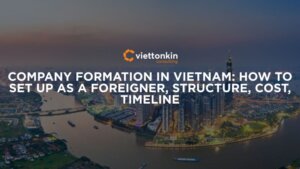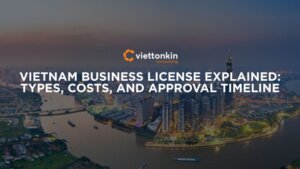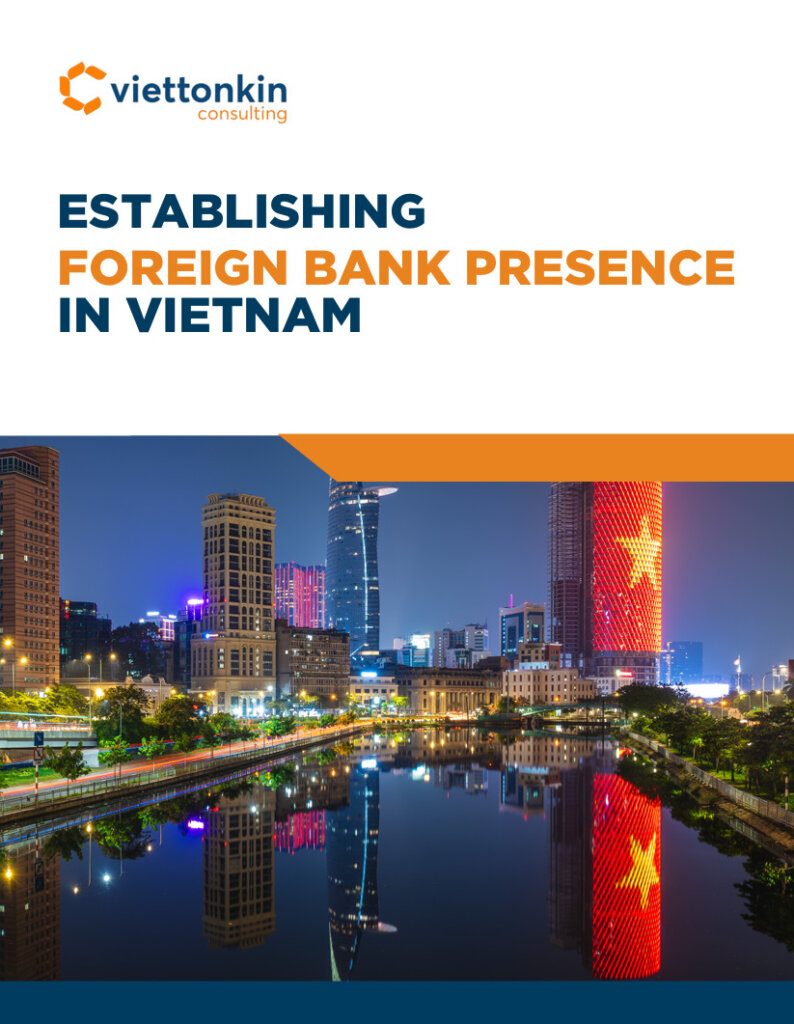Vietnam's food trade industry is one of the most dynamic sectors in the country. Fueled by an expanding middle class, rising disposable incomes, and shifting consumer preferences, the increasing demand for high-quality food products is undeniable. From bustling markets in Ho Chi Minh City to modern supermarkets in other major cities, the opportunity for both […]
The EU-Vietnam Free Trade Agreement (EVFTA) is a new-generation FTA between Vietnam and the 27 EU member states. The EVFTA officially took effect on August 1, 2020, opening up many great opportunities and prospects for both sides.
The outstanding features of the new-generation FTA - EVFTA
Similar to the previous FTAs, the EVFTA aims to enhance trade and investment between Vietnam and 27 EU countries by eliminating customs duties and providing investment protection. On the other hand, as a type of new-generation FTA, the EVFTA has its own highlights. Notably, EVFTA, along with the Comprehensive and Progressive Agreement for Trans-Pacific Partnership (CPTPP), are the two FTAs with the widest scope of commitments and the highest level of commitment of Vietnam so far.
According to data from the General Department of Customs, the EU is currently Vietnam's greatest commercial partner, holding the positions of the country's third-largest export market and fifth-largest import market. The overall import-export turnover reached US$61.4 billion in the second year of the EVFTA's operation (from August 2021 to July 2022), an increase of 11.9% from the first year the agreement went into effect. In which exports increased by 17% to reach 45 billion USD, while imports increased by 0.2% to 16.4 billion USD.
Under the scope and conditions of the EVFTA, investors from either partner benefit from 4 distinguished features, which are tariff removal, rules of origin, mutual recognition of standards, and investment promotion and safeguard.
Tariff removal
Following the trade agreement's implementation, EU partners are anticipated to eliminate around 85.6% of import taxes on Vietnamese goods export which is equivalent to 70.3% of Vietnam's total exports to the EU. At the same time, the EU will remove 99.2% of tariffs within 7 years after the agreement's entry into force. This rate is approximately 99.7% of Vietnamese export revenues to the EU. Meanwhile, the remaining 0.3% is granted a tariff quota with an import tax rate of 0%.
In exchange, Vietnam agreed to promptly reduce 48.5% of tariff lines, approximately 64.5% of the total import turnover. In addition, Vietnam will eliminate 91.8% of tariff lines, or the equivalent of 97.1% of EU export revenue, within 7 years of the Agreement's entry into force.
Furthermore, nearly 99.8% of the overall import turnover (98.3% of tariff lines) was deleted after ten years. Vietnam will implement tariff quotas following WTO obligations or under a unique roadmap to remove tariffs appropriately for the remaining 1.7% of tariff lines.
Rules of Origin (RoO)
The two parties implemented simplified measures related to RoO definitions and procedures. When providing the required supporting documents, goods imported from the European Union into Vietnam (and vice versa) will be eligible for the favorable tariffs outlined in the EVFTA. Investors can obtain additional details about this rule. Due to this, tariff treatment for items exported under Ro0 from the EU to Vietnam will be more favorable.
Mutual recognition of standards
The agreement incorporates several mutual recognition of norms to facilitate trade between the EU and Vietnam while safeguarding the health, safety, and environment of EVFTA participants. These include Labor Standards, Geographical Indications (GIs), Sanitary and Phytosanitary Measures (SPS), and Corporate Social Responsibility.
These regulations will make it simpler for foreign investors to locate new, high-quality investment opportunities in Vietnam. The two parties' shared understanding serves as a driving force for advancing Vietnam's investment process.
Promote and safeguard investment.
In order to attract investment in the manufacturing industry, the Vietnamese government has committed to widening the economy with the passage of the EVFTA. These key sectors include food and beverage products, fertilizers and nitrogen compounds, tires, gloves, plastic products, ceramics, and building supplies. This will encourage more foreign direct investment, particularly from EU member states, in Vietnam.
The opportunities for foreign investors in the Vietnam market under the impact of EVFTA
The Foreign Investment Agency recently reported that the total amount of newly registered, adjusted, and contributed foreign investment capital for the purpose of purchasing shares exceeded 25.1 billion USD. In the past 11 months, in parallel with newly registered capital which is gradually improving, adjusted capital continued to increase by 18.9%. As of November 2022, investment registration certificates had been given for 1,812 new projects. In the first 11 months of 2022, 107 nations and territories will invest in Vietnam.
EU’s FDI projects in Vietnam focus mainly on the manufacturing and processing industry. EU enterprises have invested in 18/21 sectors in the national economic sub-sector system in Vietnam. In which, 3 main areas of interest and investment are: Processing and manufacturing industry; electricity production and distribution, and real estate business. Recent trends show that EU businesses are increasingly interested in service sectors like logistics, post and telecommunications, finance, offices for rent, retail, clean energy, supporting industries, food processing, and high-tech agriculture.
The EVFTA will support the upcoming wave of FDI flows entering Vietnam and also assist in raising the standard of FDI projects as it has the potential to be a new-generation FTA with a wide range of commitments. This is in line with Vietnam's policy as outlined in Government Resolution 50-NQ/TW on encouraging high-quality FDI.
Meanwhile, it was especially significant to sign the Investment Protection Agreement (EVIPA) between Vietnam and the European Union. In particular, it strengthens the economic and trade links between the two parties, creating an excellent potential for Vietnam to attract more foreign direct investment from EU nations.
The implementation of EVFTA and EVIPA has important implications for EU FDI flows into Vietnam. Because the EU is currently a large and potential economic partner of Vietnam. EVFTA is a new-generation FTA with commitments beyond tariff elimination. As a result, the EVFTA is anticipated to provide Vietnam with chances to attract high-quality FDI through institutional reform, legislative changes, and favorable investment conditions.
By tightening environmental rules, the EVFTA's implementation may provide the foundation for Vietnam's long-term sustainable development. The percentage of FDI spent in industries with a high risk of pollution and those still utilizing antiquated technologies, such as textile dying, tends to decline. Instead, the movement toward becoming green and using renewable resources has led to a rise in high-quality initiatives.
Since the fourth COVID-19 outbreak in April 2021, according to the newly issued Business Competitiveness Index (BCI) report, European businesses' trust in the Vietnamese economy has increased significantly. The EVFTA, in the opinion of many businesses, has benefited their operations. Some European businesses may even consider adopting Vietnam as a manufacturing alternative to China. Converting or assembling goods and providing local markets in the area are all extremely promising since Vietnam may be able to import raw materials.
What challenges remain ahead?
Vietnam has made significant strides forward in terms of human resources, technology, trademarks, the overall business environment, and the legal framework for standard enforcement. However, Vietnam still needs to make the most of some features of the agreement, such as opening up new consumer markets within the EU, requesting additional EU investment projects, improving the standard of risk governance, and fostering the export of services.
Vietnamese products are still a minor portion of the EU market and are mostly sold in a few major nations including the Netherlands, Germany, France, and Italy.
Vietnam is not now a "hub" for EU investment. Because Vietnam is still working to improve the investment environment while adhering to the EU-Vietnam Investment Protection Agreement's (EVIPA) investment protection requirements. Conditions for sustainable development as well as the protection and enforcement of intellectual property rights are essential for attracting EU FDI.
Vietnamese enterprises will face competitive pressure for domestic goods as high-quality goods from Europe are expanded into the Vietnamese market. Due to the absence of import taxes, the price of EU goods will drop significantly, creating price competitiveness in the domestic market. The quality of EU products is guaranteed to reach domestic consumers and they also adhere to stringent export rules. Vietnamese consumers are more drawn to EU items than domestic ones thanks to favorable perceptions of the developed market.
EVFTA is an opportunity, but also a challenge for many Vietnamese businesses, which are mainly small businesses with little capital and not enough energy to change technology in a short time. European FDI companies, on the other hand, have long-standing, advanced production technology, significant capital resources, and an emphasis on technology investment, innovation, and creativity in processes and production. As a result, compared to businesses in the EU, Vietnamese businesses may lose their advantages in technical innovation.
Vietnamese enterprises have not been deeply aware of EVFTA. Vietnamese businesses have not been well prepared to convert in a way that will allow them to take advantage of EVFTA potential due to a lack of awareness. Many Vietnamese businesses struggle to adapt to working conditions, make investments in new technologies, and adhere to localization standards.
Investors looking to invest in Vietnam have faced both possibilities and obstacles as a result of the EVFTA. Viettokin takes pride in its standing in this industry and is constantly available to assist investors in understanding market policies and trends. Contact us today to increase your chances of success!











